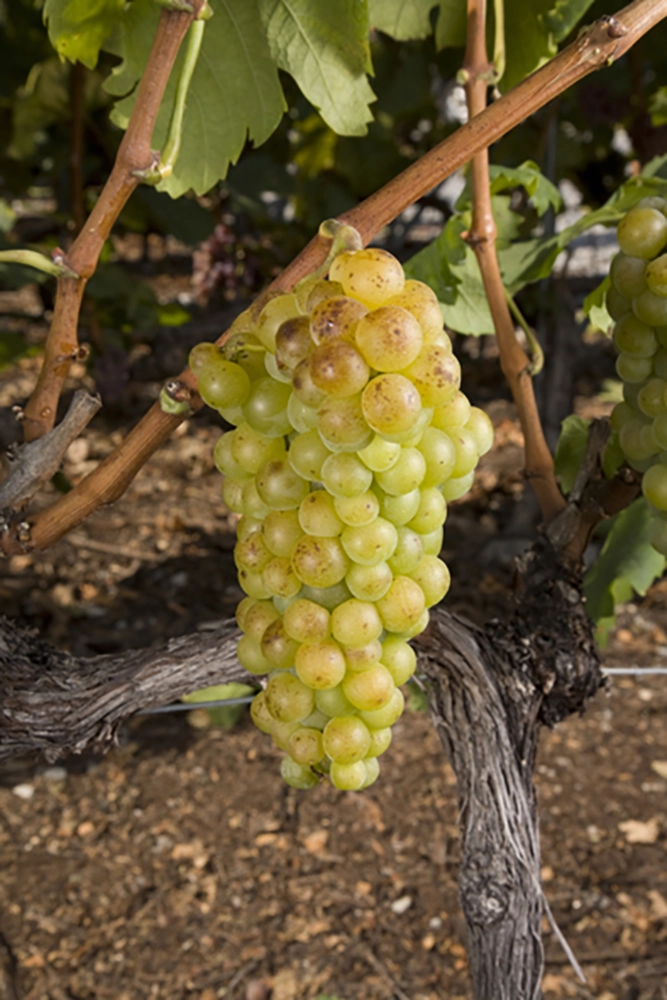Muscat, a taste of the Mediterranean

The name Muscat doesn’t refer to a single grape variety but rather to a group scattered around the Mediterranean (Moscoto in Italian, Muskateller in German). They share the same aroma: muscaté in French. Their birthplace was supposedly Greece, but recent research shows that these Muscat grapes are not necessarily genetically linked.
Muscat is mentioned in Valais for the first time in 1535-1536 but with the name Muscatellum. Its excellent reputation is underscored in several historical documents from the 17th and 18th centuries. More recently, morphological and genetic research has brought to light the existence of two distinct Muscat grapes in Valais:
- Muscat du Pays, also called Muscat Vert, identical to Italy’s Moscato Giallo
- Muscat Blanc, also called Muscat Blanc à Petits Grains, one of the most widely-grown Muscat grapes in the world. It is found notably in the south of France where it produces the well-known Muscat de Frontignan.
The Muscats grown in Valais apparently were brought in via the Rhone Valley for one and the Simplon Pass for the other.
Sourced from
VOUILLAMOZ José, « Les cépages au XVIe siècle : Muscat, Gouais Blanc, Gros Bourgogne et Savagnin Blanc » in Histoire de la Vigne et du Vin en Valais : des origines à nos jours, Sierre-Salgesch, Musée valaisan de la Vigne et du Vin, Gollion, Infolio, 2009.
© copyright Musée du Vin - Webdesign | bebold


